Gardening is a journey filled with the joy of nurturing life, and whether you’re just starting out or have years of experience, there’s always something new to discover. “18 Eye-Catching Perennial Varieties You Can Grow” is your passport to a vibrant garden that keeps on giving year after year, with each plant promising a tapestry of color and texture that will captivate your senses and your soul.
Imagine the satisfaction of watching your garden flourish with minimal effort, as these perennials return season after season, more stunning than before. This guide is crafted to inspire confidence, equipping you with practical tips and insights that will transform your garden into a thriving oasis, no matter your level of expertise.
In the world of perennials, there’s a special thrill in witnessing the perennial favorites burst into life, making your garden a living masterpiece. You’ll find that with each page, the prospect of growing these resilient and beautiful plants becomes not only possible but immensely rewarding, inviting you to share in the timeless magic of gardening success.
Understanding Perennial Plant Basics

Perennial plants are those that live for more than two years, returning each spring to bring color and texture to your garden. They offer the advantage of low maintenance compared to annuals, as they do not need to be replanted each year.
When selecting perennials, consider your local climate and the specific growing conditions of your garden. It’s crucial to choose varieties that match the sunlight, soil type, and moisture levels of your garden space.
Most perennials thrive in well-draining soil, so consider adding organic matter like compost to improve soil structure and fertility. Regular watering is essential, especially during dry spells, but be cautious of overwatering, which can lead to root rot.
For beginners, starting with easy-to-grow perennials like daylilies or hostas can be rewarding. These plants are forgiving and can tolerate a variety of conditions, making them perfect for gardeners who are still learning the ropes.
Experienced gardeners might experiment with more challenging perennials, such as peonies or delphiniums, which require specific care to thrive. These plants often demand more attention to soil pH and may need staking to support their growth.
- Ensure that you mulch around your perennials to retain moisture and suppress weeds.
- Dividing perennials every few years can help maintain their vigor and prevent overcrowding.
- Deadheading spent blooms encourages more flowers and prevents the plants from going to seed too early.
Selecting the Right Perennial Varieties

Choosing the right perennial varieties starts with understanding your garden’s climate and soil conditions. Perennials thrive when you select species that are well-suited to your local environment, so begin by assessing factors like sunlight exposure and soil pH.
To enhance your garden’s visual appeal, consider mixing perennials with varied blooming seasons. This approach ensures continuous color and interest throughout the growing season, and strategically planning for staggered blooms can keep your garden vibrant from spring to fall.
Beginners should start with hardy perennials like daylilies or hostas, which are known for their resilience and ease of care. These plants require minimal maintenance once established, making them perfect for novice gardeners seeking success with minimal effort.
More experienced gardeners might experiment with incorporating less common varieties such as hellebores or echinacea. These plants can be more sensitive to specific conditions, so ensure they receive the right balance of sunlight and moisture for optimal growth.
Regardless of your experience level, always consider the mature size of the perennials you choose. Planting with future growth in mind prevents overcrowding and ensures that each plant can thrive, maintaining the health and beauty of your garden over time.
Dazzling Daylilies for All Seasons
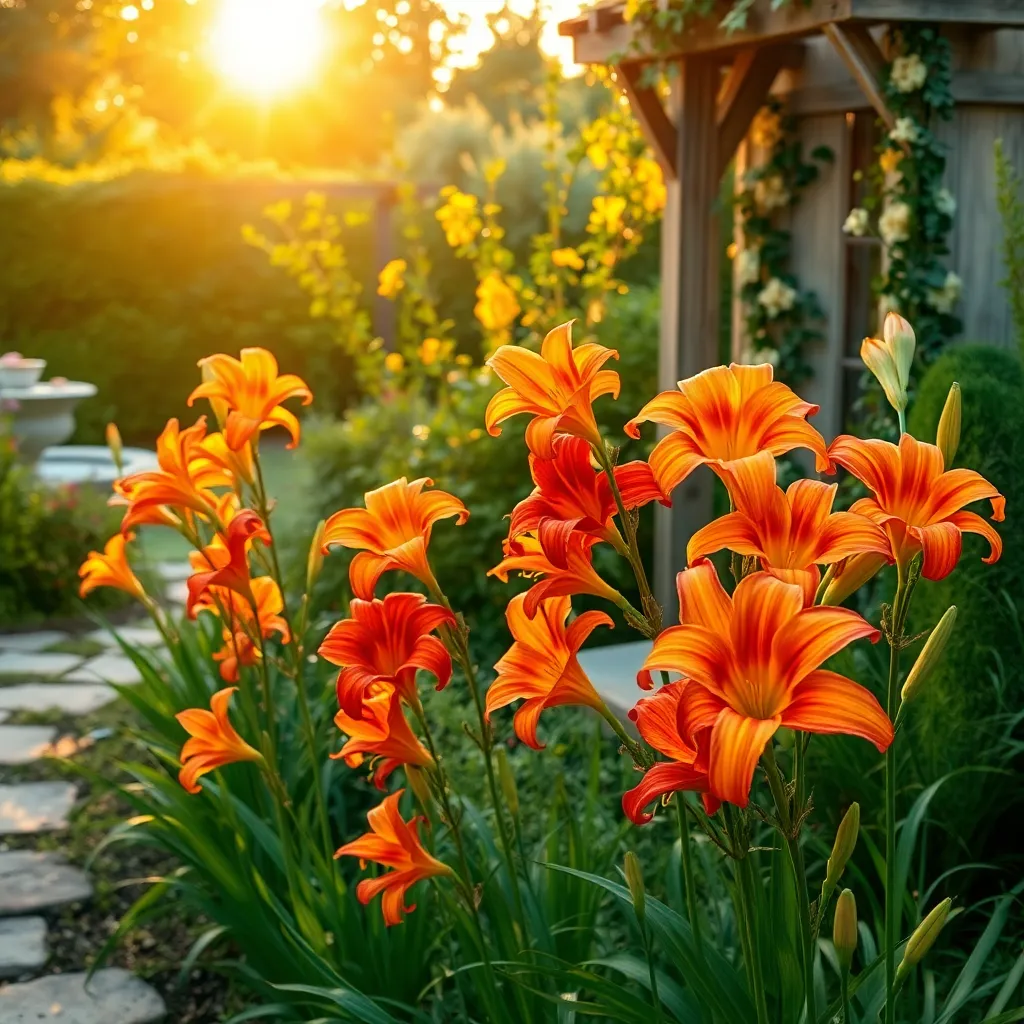
Daylilies are a versatile addition to any garden, offering vibrant blooms throughout the growing season. These hardy perennials thrive in a variety of conditions, making them a favorite for both beginner and experienced gardeners.
To ensure your daylilies flourish, plant them in well-draining soil enriched with organic matter. They prefer full sun but can tolerate partial shade, though fewer blooms might result.
Water your daylilies deeply once a week, especially during dry spells, to encourage strong root development. Mulching around the base helps retain moisture and suppress weeds, promoting healthier growth.
Regular deadheading will keep your daylilies looking neat and encourage continuous blooming. For those looking to expand their garden, consider dividing daylilies every three to five years in early spring or late summer.
Enchanting Echinacea: A Garden Staple
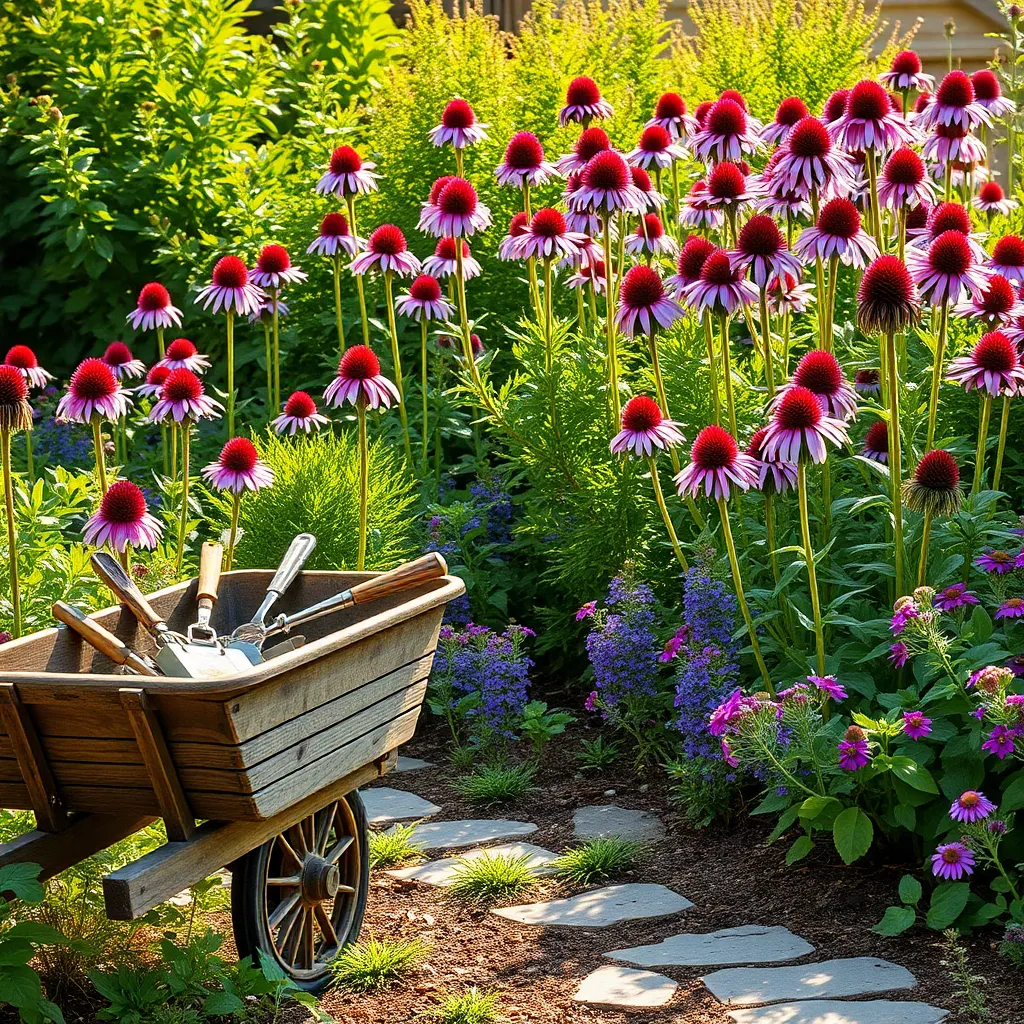
Echinacea, commonly known as coneflowers, are a must-have for any perennial garden, offering blooms from midsummer to fall. These resilient plants thrive best in full sun and well-drained soil, making them perfect for sunny borders and open landscapes.
When planting echinacea, ensure to space them about 18 inches apart to allow for air circulation and prevent disease. Watering should be deep but infrequent, as these plants are drought-tolerant once established, reducing maintenance efforts for busy gardeners.
For gardeners looking to enhance their echinacea blooms, deadheading spent flowers can promote further flowering. However, leaving some seed heads intact can attract birds like finches in the fall, adding an ecological benefit to your garden.
Experienced gardeners might experiment with different echinacea varieties, such as the vibrant ‘Cheyenne Spirit’ or the pastel ‘PowWow Wild Berry’. These varieties can add a splash of color while maintaining the same care requirements, ensuring your garden remains lively and low-maintenance.
Vivid Verbena: A Colorful Choice
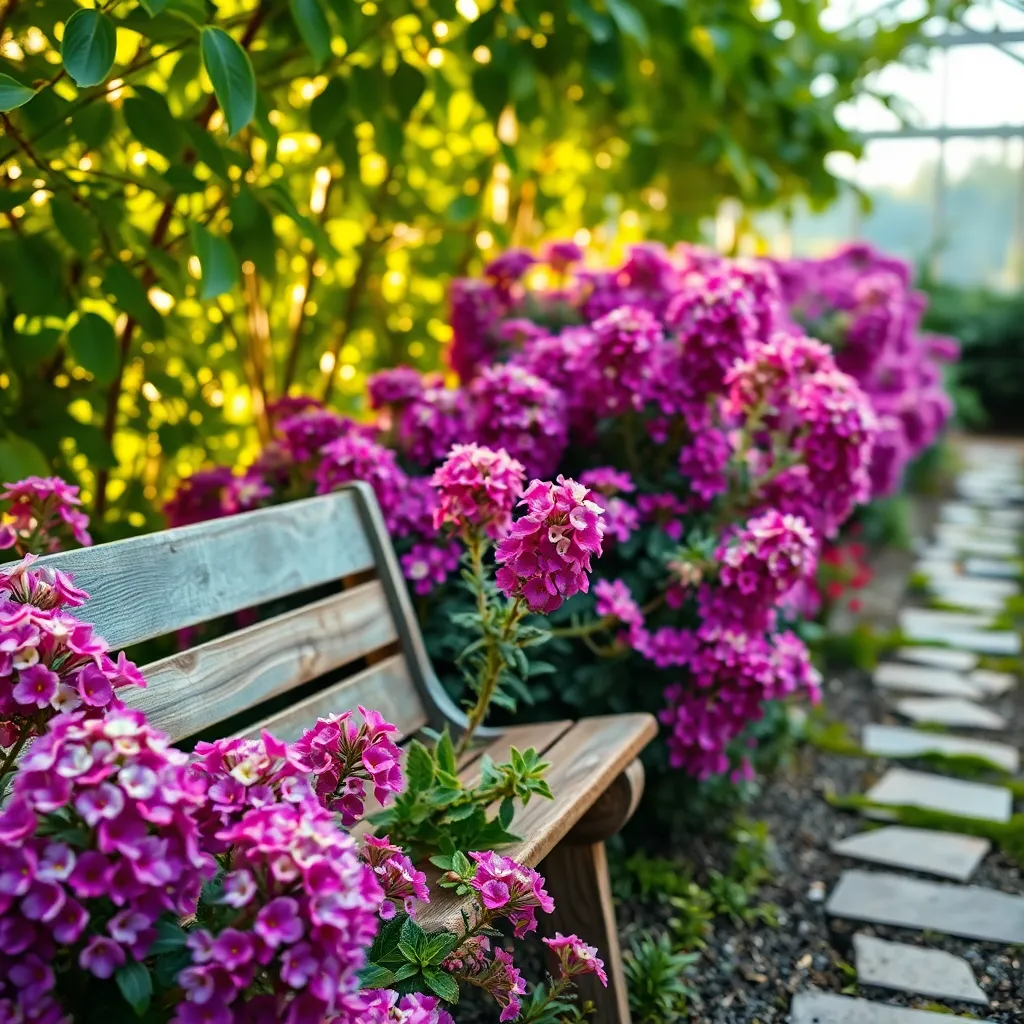
Verbena is a delightful perennial that brings a splash of vibrant color to any garden landscape. Known for its resilience, this plant is particularly suited to sunny spots, thriving best in areas with full sun exposure and well-draining soil.
To maximize growth and flowering, it’s essential to water verbena regularly but avoid overwatering. Let the soil dry out slightly between waterings, as overly moist soil can lead to root rot, a common issue if not monitored carefully.
Gardeners should consider deadheading spent blooms to encourage continuous flowering throughout the growing season. This simple maintenance step not only prolongs the blooming period but also keeps the plant looking tidy and vibrant.
For those in cooler climates, overwintering verbena is possible by applying a layer of mulch to protect the roots from frost. Additionally, try propagating verbena through cuttings in the late summer to expand your garden with minimal effort and cost.
Lush Lavender: Fragrance and Beauty
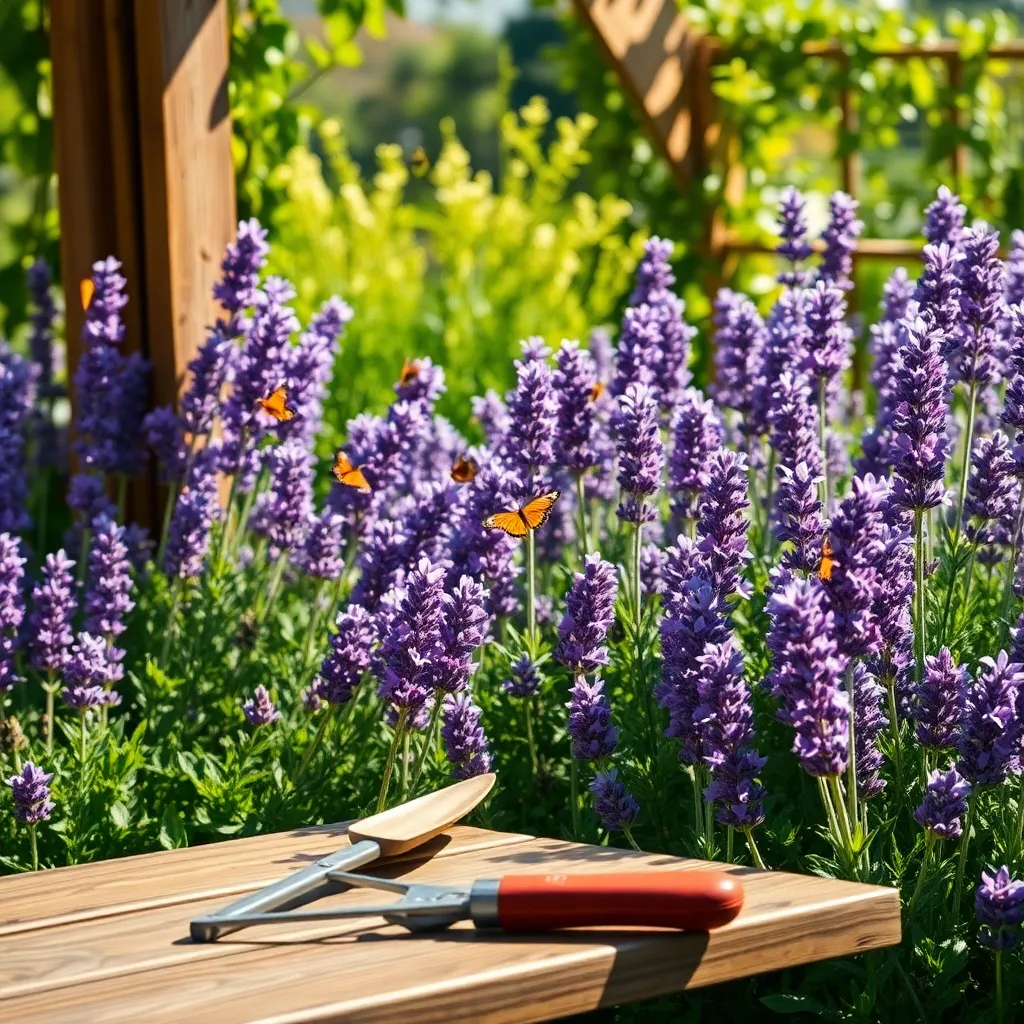
Lavender is a perennial favorite among gardeners for its fragrance and beauty. To grow lavender successfully, choose a sunny spot with well-drained, sandy soil, as it thrives in conditions similar to its Mediterranean origins.
Water lavender sparingly; it prefers to be on the dry side, making it an excellent choice for drought-prone areas. Ensure that the soil is allowed to dry out between waterings to prevent root rot, which is a common issue with overwatering.
For beginners, starting with established plants from a nursery can offer a quicker path to success. More advanced gardeners may enjoy propagating lavender from cuttings, which should be taken in the spring and rooted in a mix of sand and peat.
Pruning is essential for maintaining a lush lavender bush. Trim back the plants in early spring or after the first bloom to encourage a compact shape and more prolific flowering.
Resilient Rudbeckia for Vibrancy
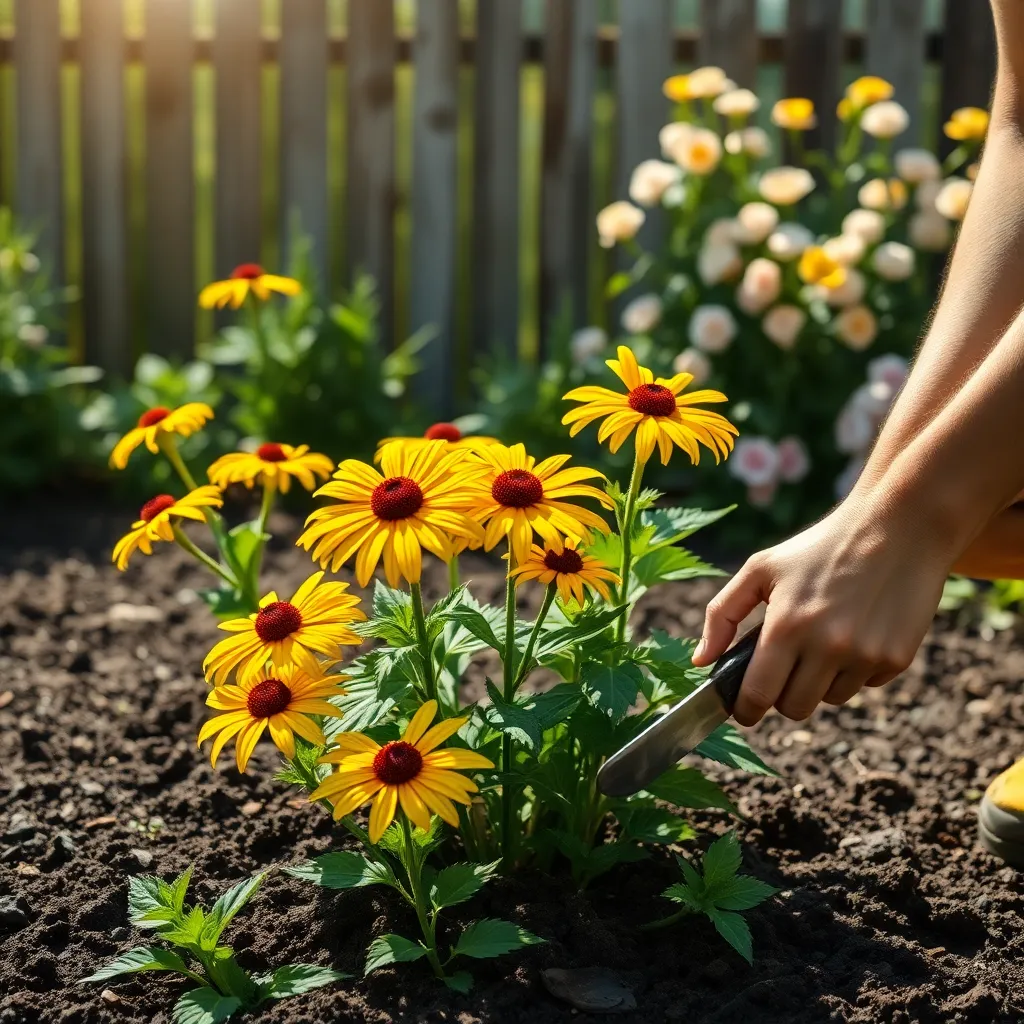
Rudbeckia, commonly known as Black-eyed Susan, offers a burst of vibrant color and incredible resilience in the garden. Known for their hardiness, these perennials thrive in a variety of climates, making them an excellent choice for gardeners at any experience level.
To ensure your Rudbeckia flourishes, plant them in a location that receives full sun, as this promotes the best blooms. They prefer well-drained soil and can tolerate a range of soil types, from sandy to clay, as long as drainage is adequate.
Watering needs for Rudbeckia are minimal once established, as they are drought-tolerant plants. However, during prolonged dry spells, providing a deep watering once a week can help maintain their health and vibrancy.
For gardeners seeking advanced tips, deadheading spent flowers encourages continual blooming throughout the season. Additionally, dividing Rudbeckia every three to four years helps rejuvenate the plants and prevent overcrowding, ensuring your garden remains lively and vibrant.
Graceful Gaillardia: Bold Blooms
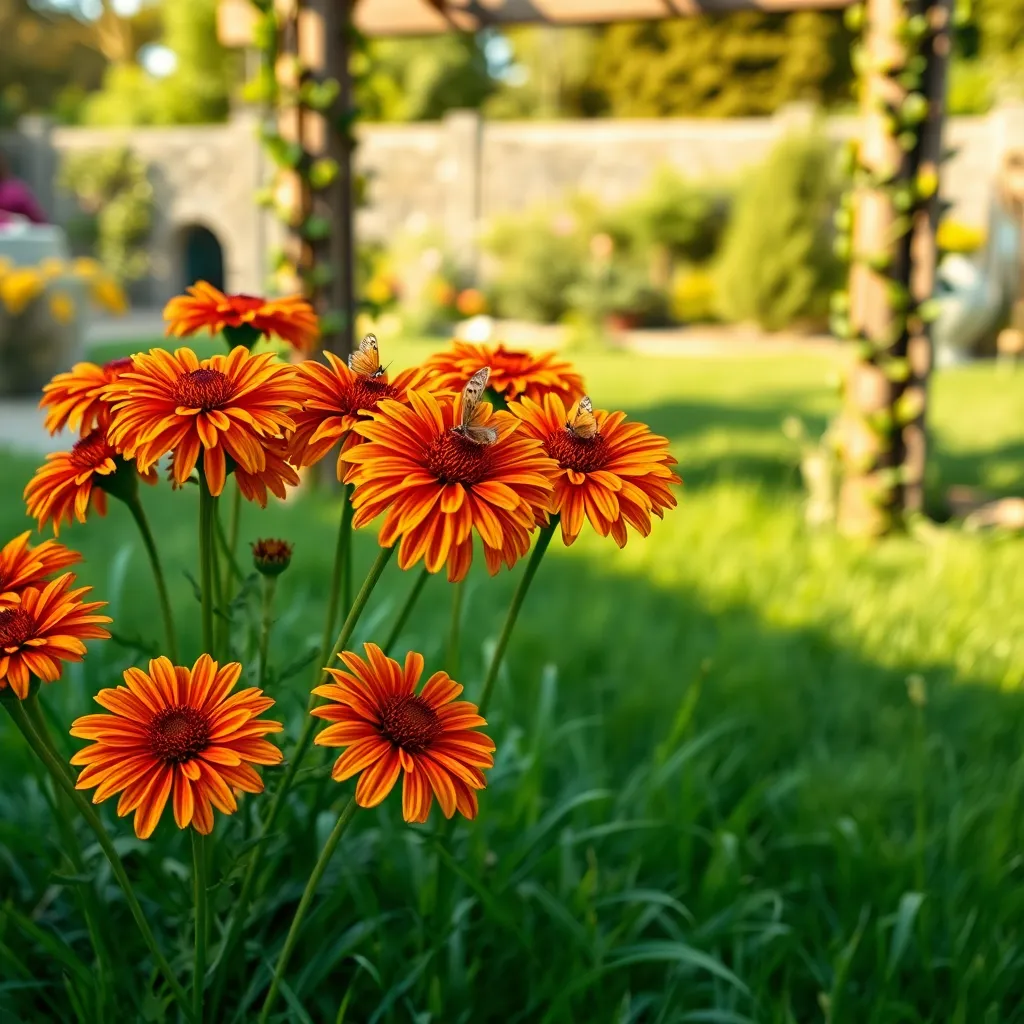
Gaillardia, commonly known as Blanket Flower, offers gardeners bold blooms that captivate with their vibrant hues. These perennials are not only visually striking but also incredibly resilient, making them an excellent choice for beginner gardeners looking to add a pop of color to their garden.
To ensure your Gaillardia thrives, plant it in a location that receives full sun, as this promotes the best flowering. They prefer well-draining soil, so consider amending your garden bed with sand or grit to improve drainage if necessary.
Watering needs for Gaillardia are relatively low; allow the soil to dry out between waterings to prevent root rot. During prolonged dry spells, an occasional deep watering will suffice, helping to maintain their health and vibrant appearance.
For gardeners looking to extend the blooming period, deadheading spent flowers encourages new growth and prolongs their blooming season. Advanced gardeners can propagate Gaillardia easily by dividing clumps in the spring or fall, ensuring a robust display year after year.
Astounding Astilbe: Feathered Elegance
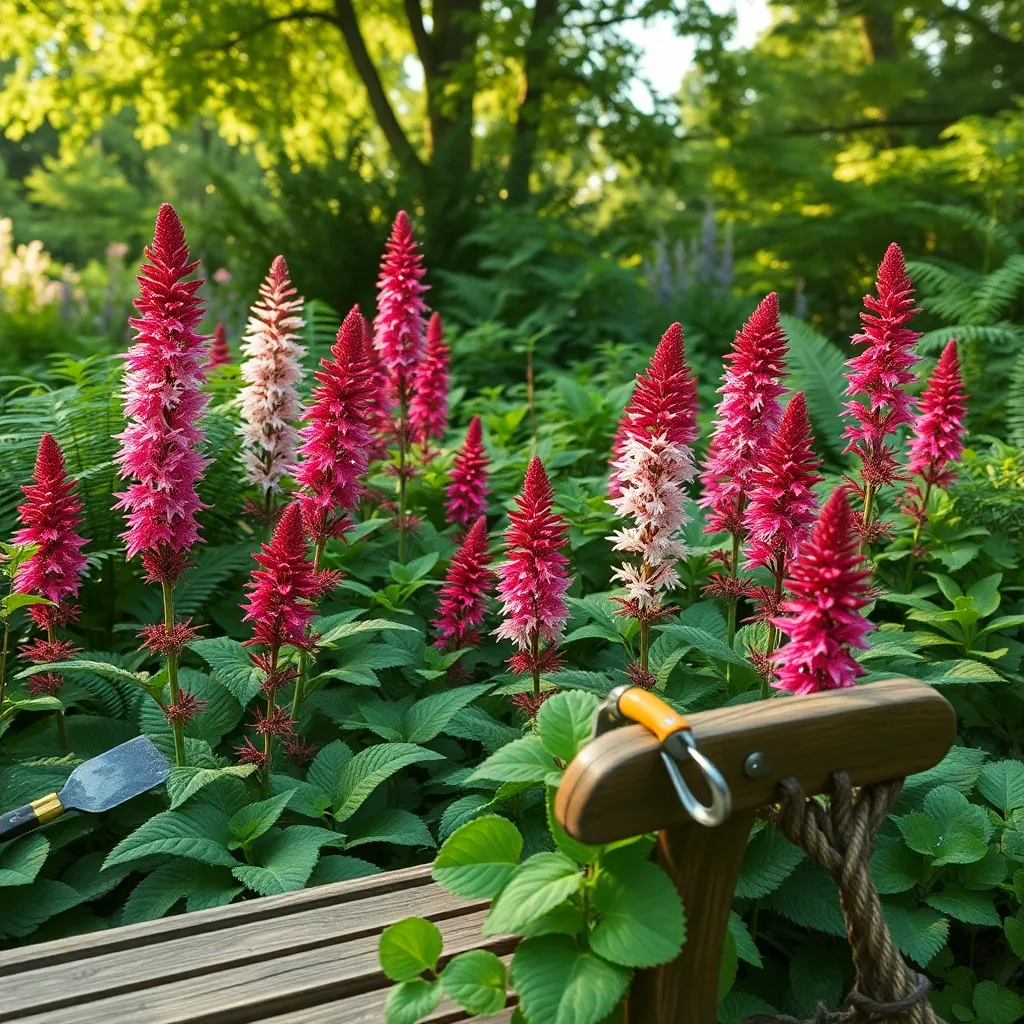
Astilbe, known for its elegant feathery plumes, is a perennial favorite for shady garden spots. These plants thrive in moist, well-drained soil, making them ideal for areas with consistent rainfall or near water features.
Consider planting Astilbe in a location with partial to full shade to protect it from the harsh afternoon sun. This plant can be a stunning addition to borders, where its vibrant blooms can create a lush, colorful backdrop.
Watering is crucial, especially during dry spells, to keep the soil evenly moist. Aim to water deeply once or twice a week, ensuring that the root zone is adequately hydrated.
For advanced gardeners, consider applying a layer of organic mulch to retain moisture and suppress weeds. Additionally, dividing Astilbe every three to four years can promote vigorous growth and prevent overcrowding.
Majestic Monarda: A Pollinator’s Dream

Monarda, often known as bee balm, is a stunning addition to any garden, offering vivid blooms that attract a wide variety of pollinators. These perennials thrive in sunny locations, where they can soak up at least six hours of direct sunlight daily.
For optimal growth, plant Monarda in well-drained soil enriched with organic matter such as compost. Ensure the soil remains moist but not waterlogged, as consistent watering will help maintain their lush foliage.
Beginner gardeners will appreciate Monarda’s resilience against common pests and diseases, although keeping an eye out for powdery mildew can help maintain plant health. To prevent this, provide adequate air circulation by spacing plants about 18 to 24 inches apart.
Advanced gardeners can experiment with different Monarda cultivars to extend the bloom season and add diverse colors to their landscape. Regular deadheading not only encourages more blooms but also keeps the plant looking tidy and vibrant throughout the summer months.
Alluring Alliums: Architectural Appeal
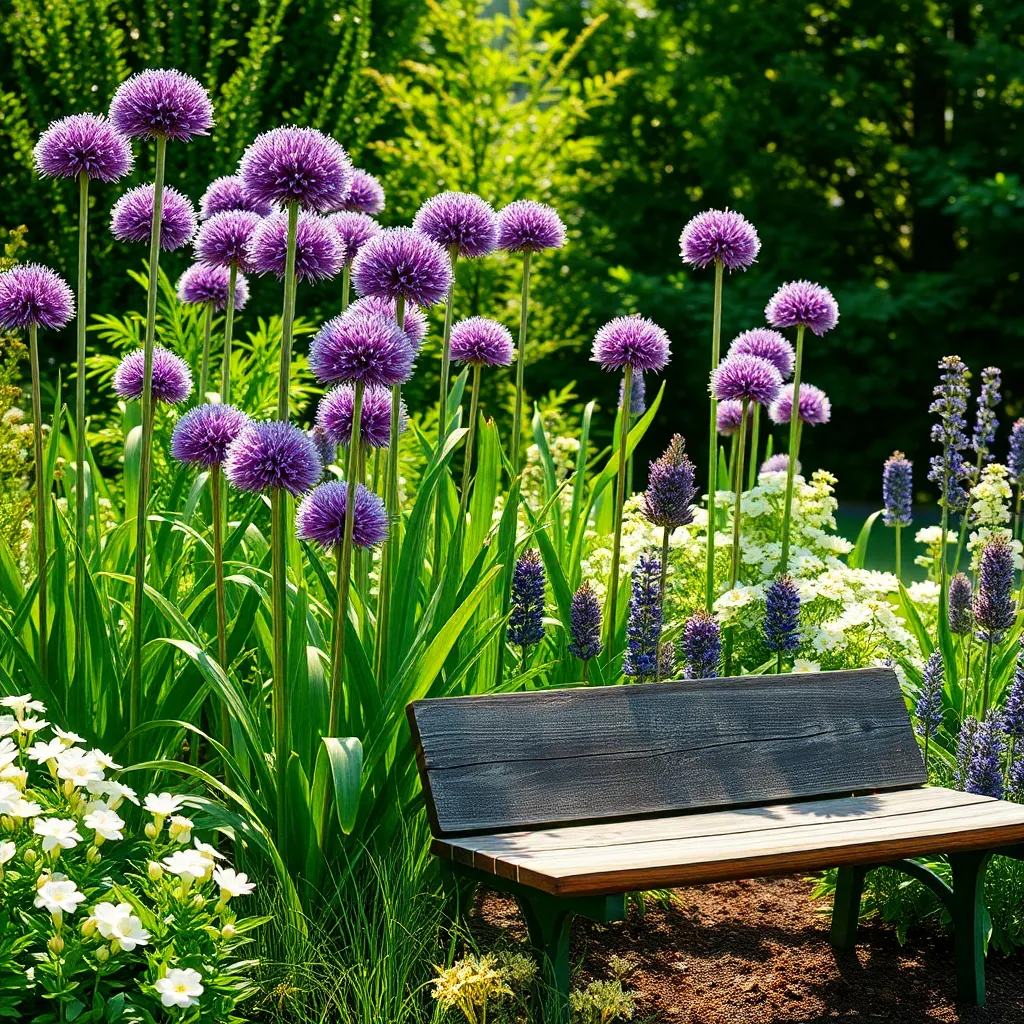
Alliums, with their striking spherical blooms, add a bold architectural touch to any garden. These perennials are not just visually appealing; they are also easy to grow, making them a favorite among gardeners of all levels.
To thrive, alliums require well-drained soil and a sunny location, as they are sun-loving plants. Ensure that the soil is neither too rich nor too heavy, as alliums prefer a more sandy or loamy soil composition.
Plant allium bulbs in the fall, about 4 inches deep and 6 inches apart, to allow for their expansive blooms. Water them sparingly, as overwatering can lead to rot; a good soak every 10 to 14 days is usually sufficient.
For experienced gardeners looking to enhance their allium display, consider planting different varieties to achieve a staggered bloom throughout the season. Additionally, leaving the seed heads after flowering can provide an interesting winter display.
Captivating Coreopsis: Sunshine in Bloom
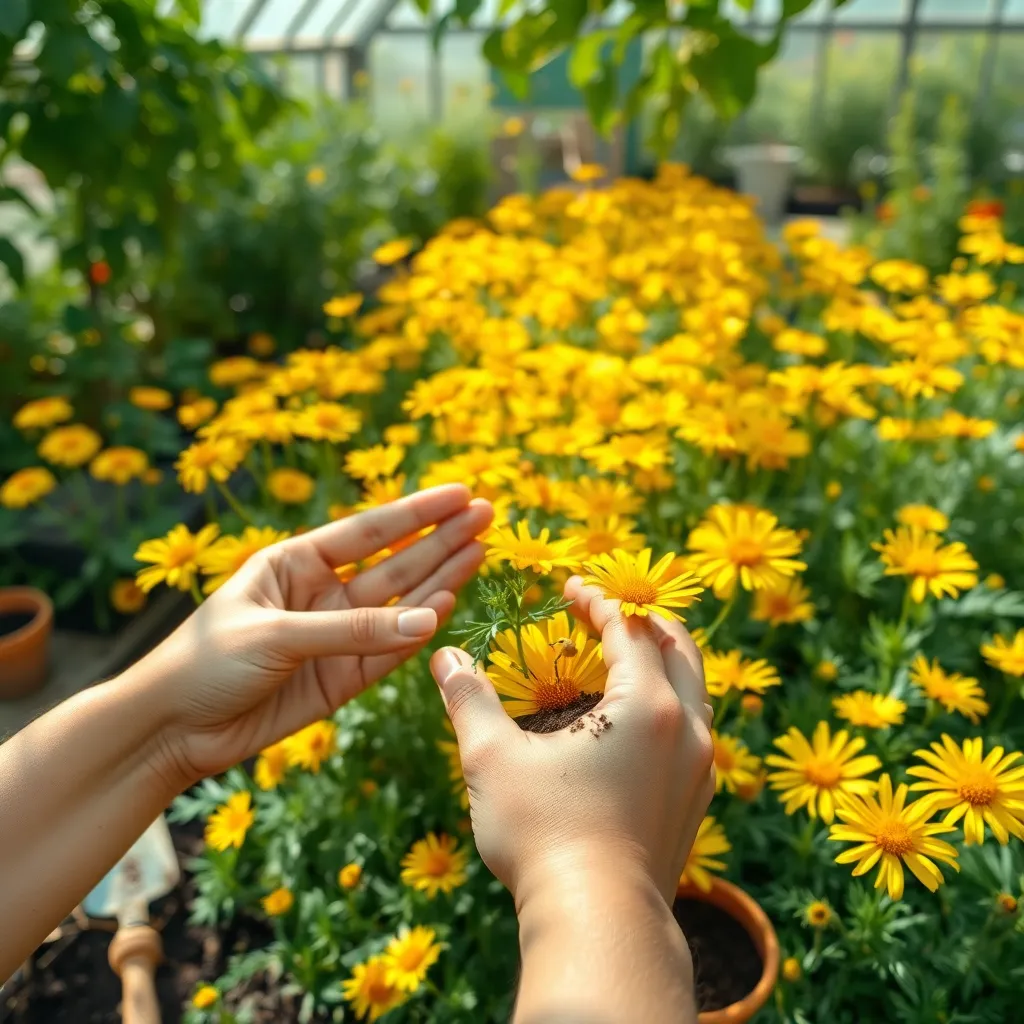
Coreopsis, often referred to as tickseed, brings a burst of sunshine to any garden with its vibrant, daisy-like blooms. These hardy perennials thrive in well-drained soil and full sun, making them an ideal choice for gardeners seeking a low-maintenance, drought-tolerant plant.
To start growing coreopsis, choose a location that receives at least six hours of sunlight daily. Amend the soil with compost to improve drainage and provide essential nutrients, ensuring your plants have the best start possible.
Water young coreopsis plants regularly until they are established, typically within the first growing season. Once established, they require minimal watering, making them perfect for water-wise gardens.
For gardeners aiming to extend the blooming period, deadheading spent flowers is key. Pruning the plants back by one-third in midsummer can also encourage a second wave of blooms, keeping your garden colorful well into fall.
Hearty Hostas: Foliage Focus
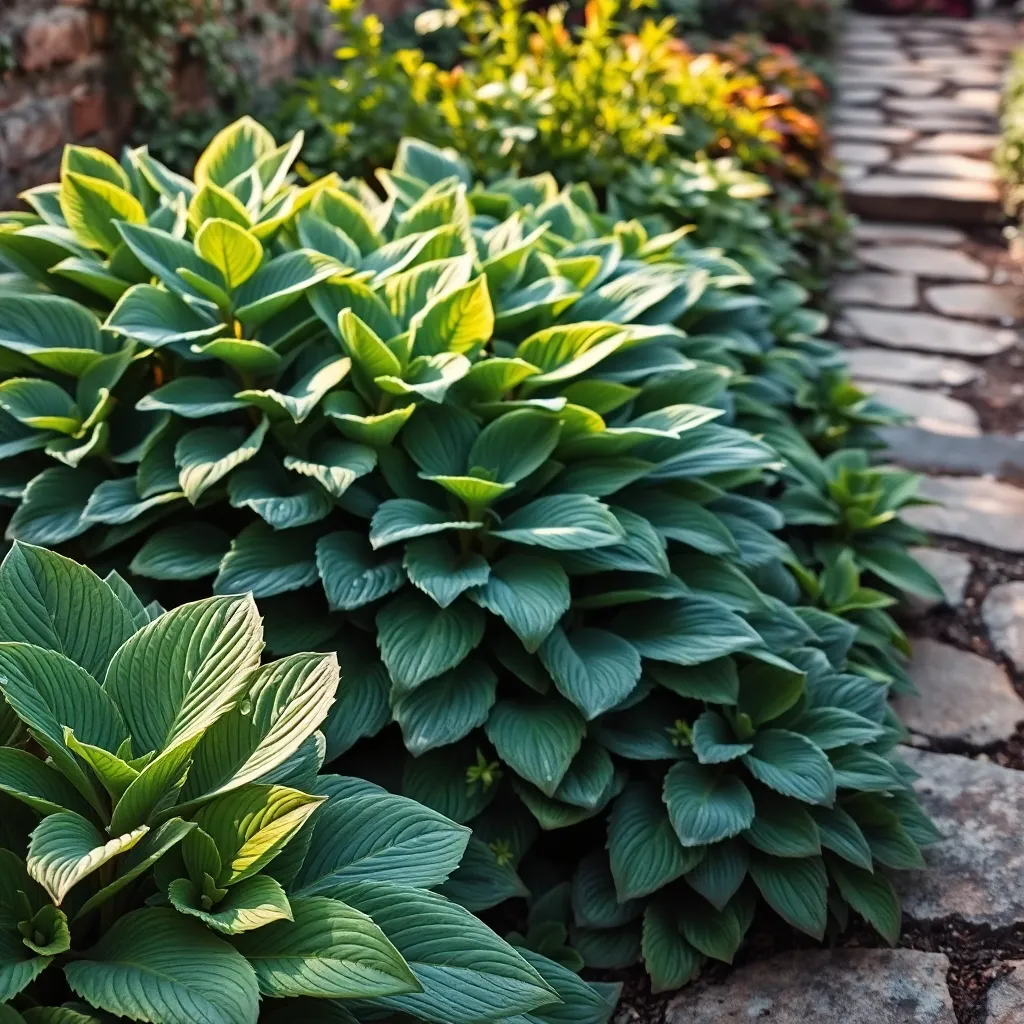
Hearty Hostas are a fantastic choice for adding lush, textured foliage to any garden setting. These versatile perennials thrive in shaded areas, making them ideal for spots where other plants might struggle.
To ensure your hostas flourish, plant them in well-drained soil enriched with organic matter. Regular watering is essential, especially during dry spells, to keep their broad leaves looking vibrant and healthy.
Beginner gardeners will appreciate hostas’ low-maintenance nature, while more experienced green thumbs can experiment with different varieties to create stunning contrasts in their garden beds. Consider planting them alongside ferns or astilbes for a picturesque woodland garden effect.
For optimal growth, apply a slow-release fertilizer in early spring as new growth appears. To control slugs and snails, which are common pests, use organic methods such as beer traps or diatomaceous earth around the base of the plants.
Beautiful Baptisia: A Burst of Blue
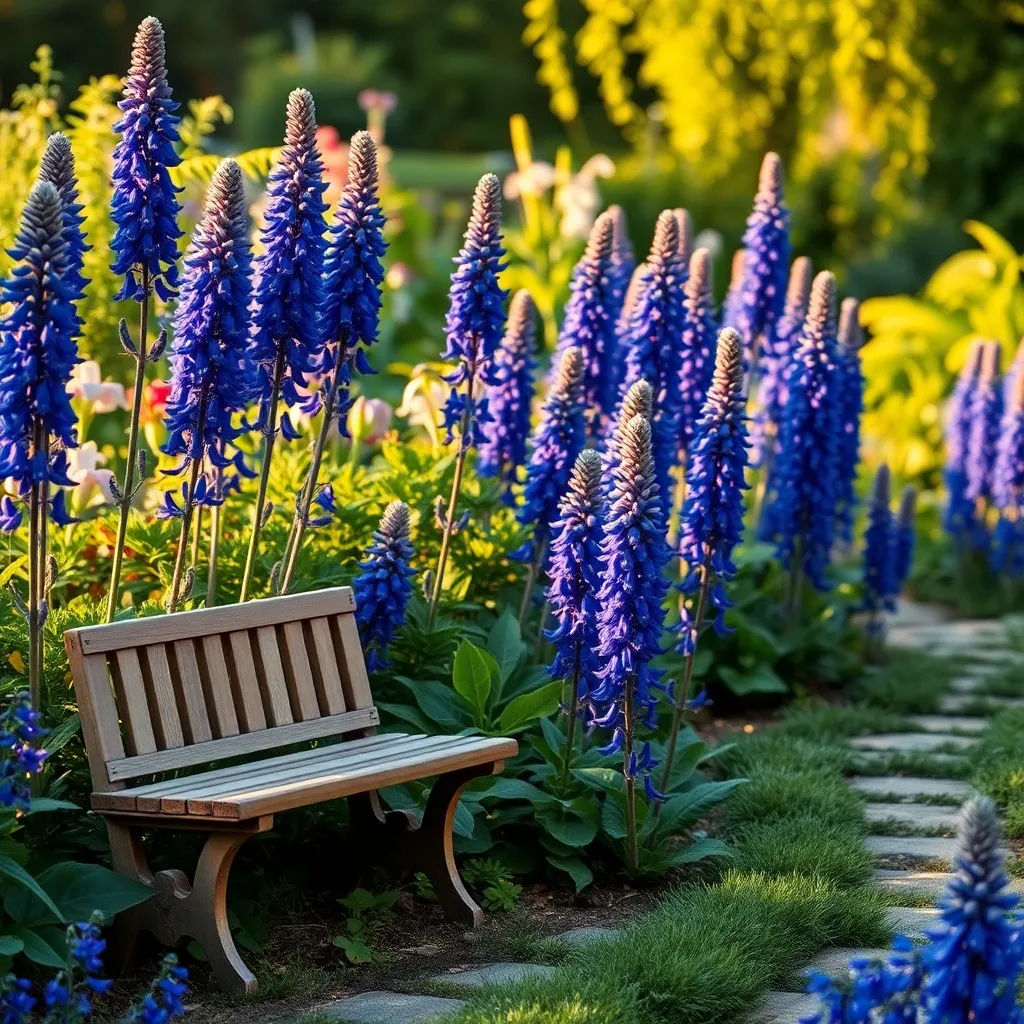
Known for their striking blue flowers, Baptisia plants can transform any garden into a vibrant display. These hardy perennials are low-maintenance, making them ideal for both novice and experienced gardeners looking to add a pop of color.
To ensure your Baptisia thrives, plant them in well-draining soil with full sun exposure. While they are drought-tolerant once established, regular watering during their first growing season helps them develop a strong root system.
For those seeking lush growth, consider applying a balanced fertilizer in early spring as new shoots emerge. Pruning Baptisia is minimal; simply remove any dead stems in late winter to encourage a tidy appearance.
Experienced gardeners can try propagating Baptisia through division or by collecting seeds after the flowering season. Remember to be patient, as these plants can take a few years to reach their full glory, rewarding your efforts with an exquisite burst of blue blooms each spring.
Spectacular Salvia: Long-lasting Blooms

Salvia, known for its spectacular and long-lasting blooms, is a must-have in any perennial garden. These vibrant plants thrive in full sun and well-drained soil, making them an excellent choice for both beginner and experienced gardeners.
To ensure your salvia plants thrive, water them deeply but infrequently, allowing the soil to dry out between waterings. This encourages deep root growth and helps the plant withstand periods of drought, a common challenge in many gardens.
For a continuous display of color, deadhead spent blooms regularly to encourage more flowering throughout the season. As an advanced tip, consider cutting back the entire plant by one-third after the first flush of blooms to promote a second, vigorous bloom cycle.
Salvia is not only beautiful but also beneficial, attracting pollinators like bees and butterflies to your garden. For gardeners looking to deter deer and rabbits, salvia’s aromatic foliage is generally avoided by these garden pests, offering a natural solution to a common problem.
Charming Chrysanthemums: Fall Favorites
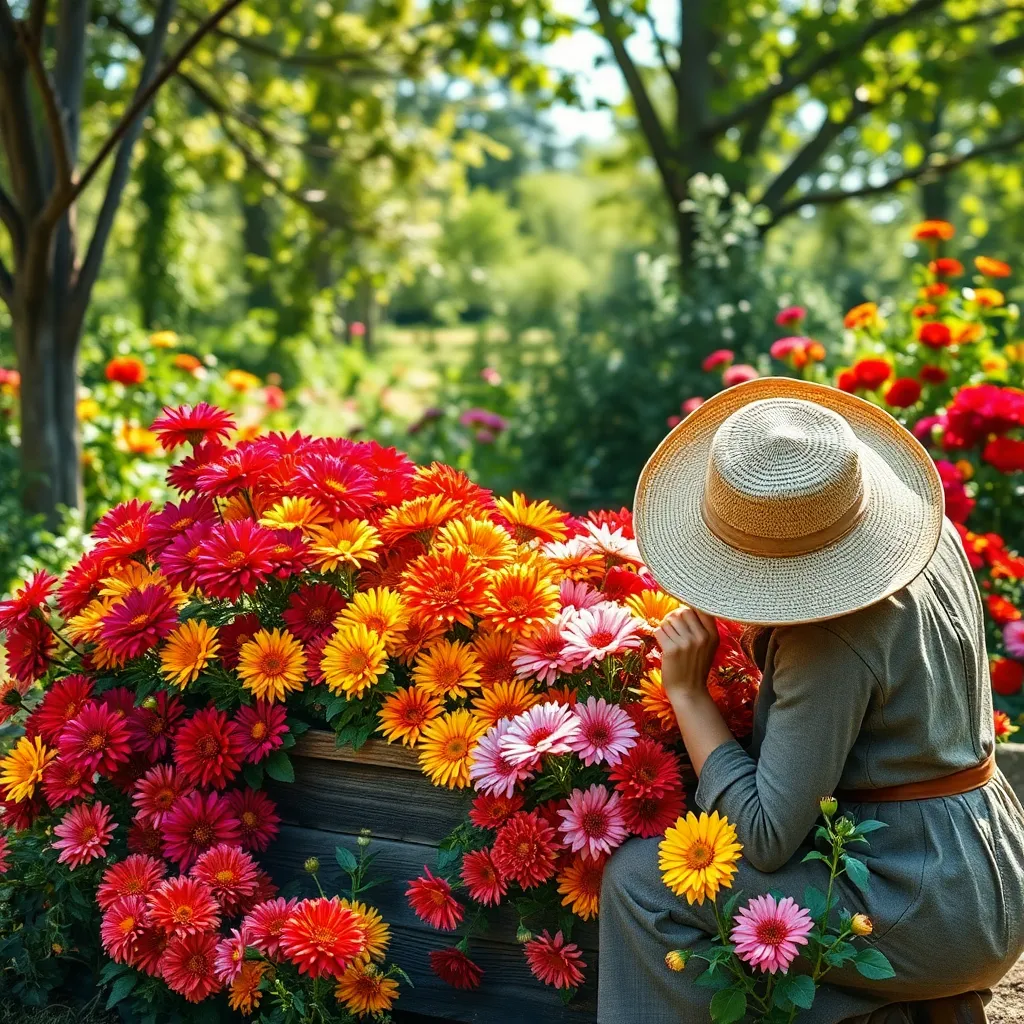
Chrysanthemums, or ‘mums,’ are quintessential fall flowers that bring vibrant colors to autumn gardens. To ensure a spectacular display, plant them in well-drained soil with a pH of 6.0 to 7.0, and place them in an area that receives at least six hours of sunlight daily.
As these perennials thrive best with consistent moisture, water them weekly, especially during dry spells. It’s important to avoid overhead watering to reduce the risk of fungal diseases—opt for a soaker hose or drip irrigation system instead.
For beginners, choosing a variety of chrysanthemums suited to your climate zone is key; look for hardy types like ‘Sheffield Pink’ or ‘Clara Curtis’ if you live in cooler areas. Advanced gardeners might enjoy experimenting with pinching back new growth in early summer to promote bushier plants with more blooms.
Feeding chrysanthemums with a balanced, slow-release fertilizer in spring helps support their growth and flowering. As autumn approaches and blooms begin to fade, deadhead regularly to extend the flowering season and maintain a neat appearance.
Delightful Dianthus: A Touch of Pink
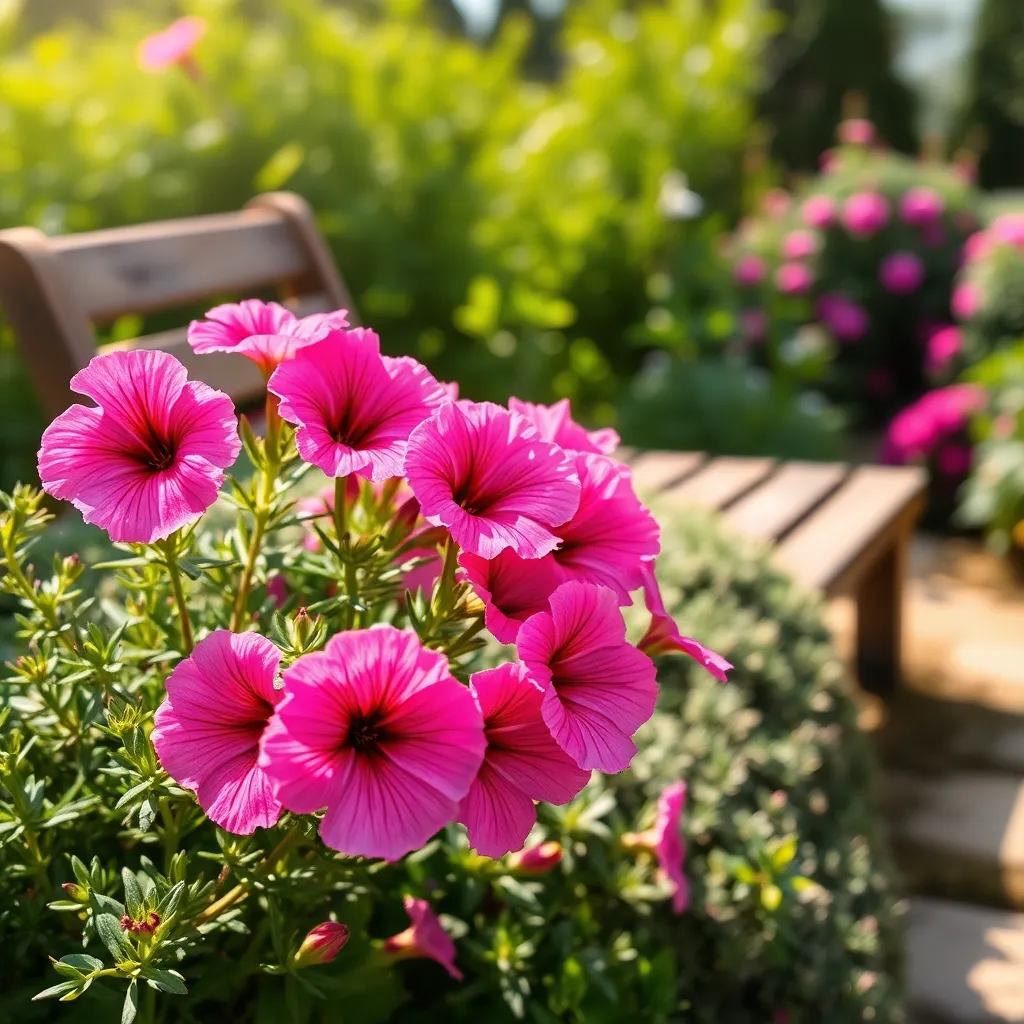
Dianthus, often known as pinks, are a delightful addition to any garden, offering a splash of vibrant color. These perennials are known for their fragrant blooms and feathery foliage, making them a favorite among gardeners seeking beauty and aroma.
To thrive, Dianthus requires at least six hours of sunlight per day, so choose a sunny spot in your garden. Well-draining soil is crucial to prevent root rot; sandy or loamy soils are ideal for these charming plants.
Watering should be done sparingly, allowing the soil to dry out between sessions, which helps prevent overwatering—a common issue with Dianthus. In terms of feeding, a balanced liquid fertilizer applied once a month during the growing season will keep them flourishing.
For those looking to enhance their gardening skills, consider deadheading spent blooms to encourage continuous flowering throughout the season. Additionally, Dianthus can benefit from being divided every 2 to 3 years, promoting vigorous growth and preventing overcrowding.
Maintaining Healthy Perennial Gardens
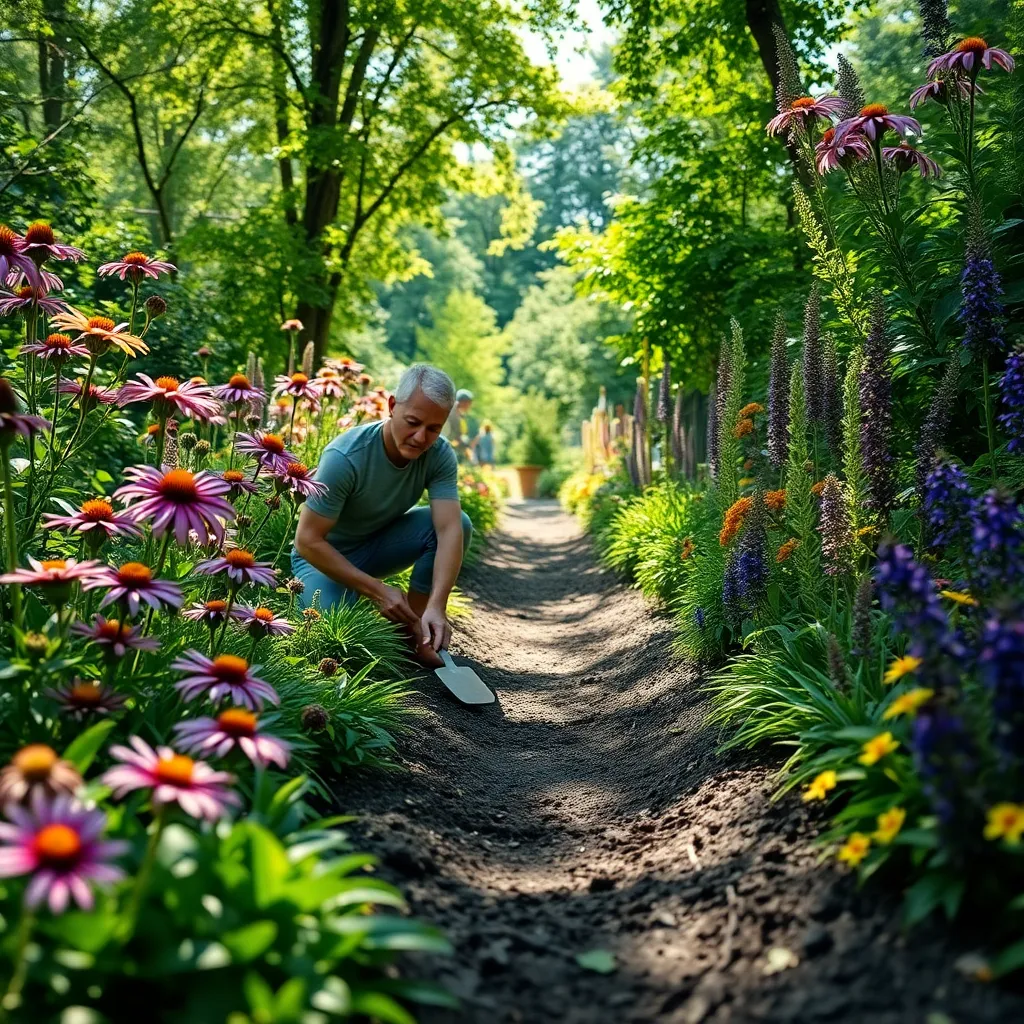
Maintaining healthy perennial gardens requires consistent care and attention to detail. The first step to a thriving garden is ensuring the soil is rich in nutrients; consider adding a layer of organic compost each spring to improve soil fertility.
Watering is crucial, but it’s essential to strike the right balance. Most perennials prefer well-drained soil, so water deeply once a week rather than a little every day to encourage deep root growth.
Regularly deadheading your perennials can promote more blooms and a tidier appearance. For beginners, simply pinch off spent flowers with your fingers or use a pair of clean, sharp scissors.
For more advanced gardeners, consider dividing your perennials every few years to invigorate plant growth and prevent overcrowding. Make sure to divide in the early spring or fall, when temperatures are cooler, to reduce stress on the plants.
To keep pests and diseases at bay, inspect plants regularly and remove any affected foliage immediately. Additionally, rotating your perennials or incorporating companion planting can naturally reduce pest problems and enhance garden diversity.
Conclusion: Growing Success with These Plants
In exploring the vibrant world of perennial varieties, we’ve unearthed 18 key concepts that can blossom into thriving relationships. From understanding the roots of trust and communication to nurturing resilience and adaptability, each concept is a vital seed in the garden of enduring connections. We’ve delved into the importance of mutual respect, the art of compromise, and the beauty of shared goals, while also highlighting the necessity of individual growth and self-care.
Now, take a moment to reflect on these insights and choose one concept to focus on today. Whether it’s practicing active listening or planning a meaningful date night, small steps can cultivate significant growth. Remember, relationships flourish with consistent care and attention.
Before you go, be sure to bookmark this article as a resourceful guide on your journey. Revisit it whenever you need a reminder of these foundational principles. As you invest in these practices, envision the success that awaits—a garden of relationships rich in love, understanding, and joy. Let this be the season where your relationships not only grow but thrive.





